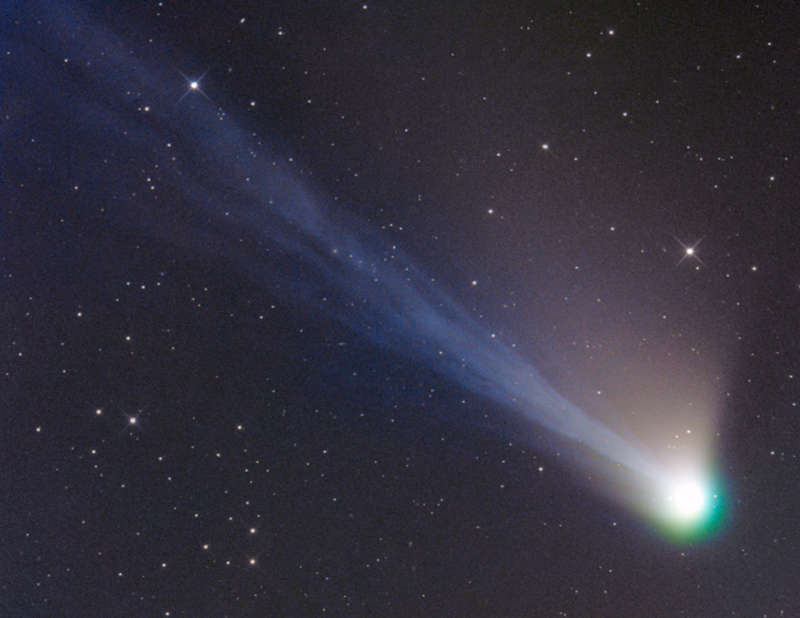Credit & Copyright: Gerald Rhemann
Explanation:
What caused the interestingly intricate tails that Comet Lemmon displayed earlier
this year?
First of all, just about every comet that nears the Sun displays two tails: a
dust tail and an
ion tail.
Comet Lemmon's
dust tail, visible above and around the comet nucleus in off-white,
is produced by sun-light reflecting
dust shed by the
comet's heated nucleus.
Flowing and more sculptured, however, is
C/2012 F6 (Lemmon)'s blue
ion tail, created by the
solar wind pushing ions expelled by the nucleus away
from the Sun.
Also of note is the coma seen surrounding
Comet Lemmon's nucleus,
tinted green by atomic carbon gas fluorescing in sunlight.
The above
image
was taken from the dark skies of
Namibia in mid-April.
Comet Lemmon is fading as it now
heads back to the outer Solar System.
Cosmonova:
APOD editor to speak in Sweden on May 28
1999 2000 2001 2002 2003 2004 2005 2006 2007 2008 2009 2010 2011 2012 2013 2014 2015 2016 2017 2018 2019 2020 2021 2022 2023 2024 2025 |
Yanvar' Fevral' Mart Aprel' Mai Iyun' Iyul' Avgust Sentyabr' Oktyabr' Noyabr' Dekabr' |
NASA Web Site Statements, Warnings, and Disclaimers
NASA Official: Jay Norris. Specific rights apply.
A service of: LHEA at NASA / GSFC
& Michigan Tech. U.
|
Publikacii s klyuchevymi slovami:
komety - kometnye hvosty
Publikacii so slovami: komety - kometnye hvosty | |
Sm. takzhe:
Vse publikacii na tu zhe temu >> | |
